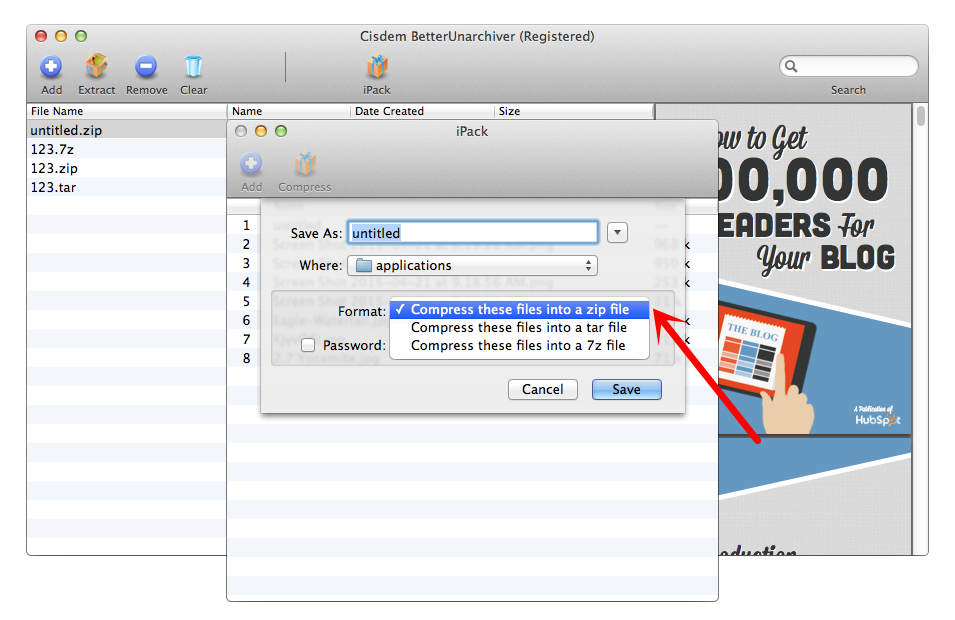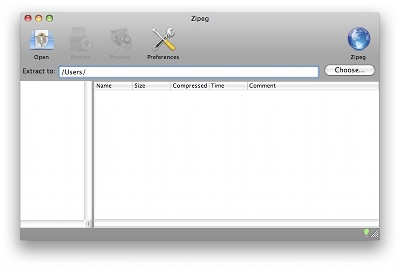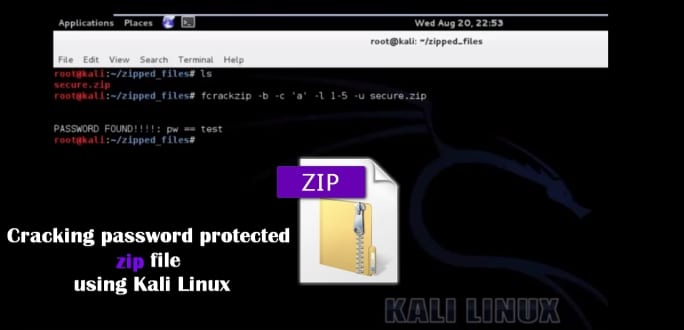Free Zip Tool With Password Protection For Mac
Zip files can be password-protected, but the standard Zip encryption scheme is extremely weak. If your operating system has a built-in way to encrypt zip files, you probably shouldn’t use it.
Jun 03, 2018 How to Protect a Zip File with a Password on PC or Mac. In this Article: Using WinRAR for Windows Using Zip for macOS Community Q&A This wikiHow teaches you how to password-protect a zip archive using WinRAR for Windows, and macOS’s built-in zip tool. Download zip password tool 2.3 for free. System Utilities downloads - Zip Password Tool by FDRLab Data Recovery Centre and many more programs are available for instant and free download. To create a password protected encrypted ZIP file you will need an add on utility like WinZip of 7-Zip. Once the EXE is built then it can indeed be expanded on a Windows system without those utilities installed / available. 7-Zip: Primarily an archiving, zip utility, the free 7-Zip offers a handy feature for the privacy-minded: the ability to password an archive you create with it. Keep in mind that others can browse.
To gain the actual benefits of encryption, you should use AES-256 encryption. 7z archives support this natively, but you can also encrypt Zip files with AES-256 encryption.
WinZip, world leader in file compression technology, introduces a new and powerful tool designed specifically for the Mac. Zip and encrypt files for safer, swifter sharing and significantly smaller storage.
Zip 2.0 Legacy Encryption vs. AES Encryption
There are actually two types of Zip file encryption. The older Zip 2.0 encryption is extremely insecure, while the newer AES encryption is fairly secure.
Unfortunately, many pieces of software — particularly operating systems with built-in support for Zip files — don’t support the newer AES encryption standard. This means that using the Zip password-protection features found in Windows XP, current versions of Mac OS X, and even typical Linux desktops won’t give you securely encrypted Zip files. Even some third-party utilities are reluctant to switch to AES for their Zip encryption as it means those AES-encrypted zip files will then be incompatible with the built-in Zip features in Windows, Mac OS X, and other software.
RELATED:Benchmarked: What’s the Best File Compression Format?
It’s still possible to get AES encryption with Zip files — but such files will require third-party software to view, anyway. You may just want to use a different archive format, such as 7z. The 7z archive format requires strong AES-256 encryption. Whenever you create a password-protected 7z file, you know that it’s securely encrypted. Really, 7z is great — it came out on top in our file-compression benchmarks. It’s generally on the top of other file compression benchmarks we’ve seen, too.
Windows – 7-Zip
Windows offers a built-in way to create Zip files. Windows XP even offered a way to password-protect and encrypt these Zip files. However, Windows XP used the extremely insecure “standard” zip file encryption algorithm. Even if you’re still using Windows XP, you shouldn’t use this feature. Later versions of Windows dropped the password-protection option entirely.
Nearly every popular encryption utility offers this features. We like 7-Zip, which is completely free and open-source, so it won’t try to nag you for any money.
With 7-Zip installed, you can select some files in a File Explorer or Windows Explorer window, right-click them, and select 7-Zip > Add to archive. Be sure to select the “Add to archive” option, as it gives you the ability to set a password. If you don’t see the menu option here, you can also open the 7-Zip application directly and use it to create an archive.
7-Zip will create a 7z archive by default, but you can also choose Zip. If you do opt to go with Zip, be sure to select the AES-256 encryption method instead of the weaker ZipCrypto method. Enter your password into the provided boxes and click OK to create your encrypted archive file.
Mac – Keka
Mac OS X also provides an easy way to create Zip files from a Finder window, but there’s no way to encrypt a zip file with the graphical user interface. The zip command included with Mac OS X does offer a way to encrypt zip files without using any third-party software. However, like the password-protection feature built into Windows XP, it uses the old and insecure standard zip encryption scheme. If you really wanted, you could use the “zip -e” command in a Terminal on a Mac. However, we strongly recommend against this.

As on Windows, you’ll once again need a third-party file compression app for secure compression. Keka seems to be one of the most well-loved file compression and decompression apps for Mac, and we can recommend it. However, even Keka doesn’t use AES for encrypting Zip files by default. You can get the currently-in-beta version of Keka and enable a hidden option to do this, or just use the standard version of Keka and create encrypted 7z files instead.
Launch Keka, select 7z, and enter a password for your archive. (If you select Zip, be sure you have the correct version of Keka and that you’ve enabled the hidden option above to get the secure encryption.)
Drag and drop one or more files you want to compress onto the Keka window and they’ll be compressed into a 7z file encrypted with the password you provided. You’ll need the password to access the file’s contents in the future.
Linux – File Roller with p7zip-full
The standard Archive Manager (File Roller) application included with Ubuntu and other GNOME-based desktop environments does have an option to create password-protected zip files. However, the underlying zip command used still uses the old, weak encryption instead of strong AES encryption. Thankfully, File Roller can be used to create encrypted 7z archives.
To enable this option, you’ll first need to install the p7zip-full package. (On some Linux distributions, it may just be called p7zip instead.) For example, on Ubuntu, you can either open the Ubuntu Software Center, search for p7zip-full and install it, or open a Terminal window and run the sudo apt-get install p7zip-full command.
Once you have, you can create encrypted 7z files directly from the File Roller window. Select some files in a file manager window, right-click them, and select Compress — or open the Archive Manager application directly and use it to create a new archive.
In the Compress window, be sure to select the 7z archive format. Click the Other Options header and provide a password. The password will be used to unlock your archive later.
There are many different software programs for creating password-protected archives, but — whatever you use — be sure it’s using secure encryption. The problem with Zip encryption isn’t purely theoretical. The web is full of tools that can “recover” a password-protected zip file that was created using the old encryption scheme. “Recover” is a less-scary word for breaking and removing the encryption.
READ NEXT- › What Can I Do with My Old iPhone?
- › How to Stream UFC 242 Khabib vs. Poirier Live Online
- › Free Download: Microsoft’s PowerToys for Windows 10
- › How to Overclock Your Computer’s RAM
- › What’s New in Chrome 77, Arriving September 10
Top 5 Password Managers for Mac Revised

Today’s online life has brought great benefits to the average person. However, it has also created some extra complications. One of them is the massive amount of passwords that people need to manage. Password managers for Mac are apps designed to reduce this burden, as they help the user to store and organize passwords. Here below is a review of the top fivepassword managers available on the market.
1. 1Password
1Password is a commercial tool, with the option of a free 30-day trial. As its name indicates, the idea behind this password keeper for Mac is for the user to remember only one password, called master password, and which allows access to the app’s database. Once access is granted, all other passwords are managed via 1Password. This software uses strong AES-256 encryption to store the passwords.
In addition, the database can be accessed through mobile devices, using fingerprints and PIN codes. The database is very comprehensive, allowing for the storage of passwords, PIN codes, documents, credit card details, and more. The software is integrated with web browsers, and can help the user in creating passwords for online accounts, filling in credit card details, personal
forms, etc.
In brief, 1Password is a very complete Mac password manager, which helps the user in reducing the burden created by having to deal with many passwords.

2. Dashlane
Dashlane is a password manager app and a secure digital wallet. It comes as a Freemium, which means that this is basically a free password manager Mac, which can be upgraded to a Premium version. In this case, the Premium version is very good, as it allows the user to handle an unlimited number of devices, supported by different platforms, in a sync manner.
Access to Dashlane is efficient, as it is done by a single master password, which is never recorded nor transmitted. Data is stored using AES-256 encryption. Other features include automatic password generation, two-factor authentication, secure backup, a dashboard, and security breach alerts. In addition, the developer publishes Security Roundup, a quarterly report on security policy analysis.
Together with the password manager, the app provides a digital wallet, where the user can store credit card information, bank account details, IDs and several other personal details, which can later be used to automatically fill in online forms. Its efficiency and ease of use prompted the New York Times to describe Dashlane as one of the best password managers for Mac.
Concisely, Dashlane is an excellent option as a Mac password manager. Both, its combined features and efficiency stand out in a very competitive market.
3. LastPass
LastPass is a password manager Mac developed by LogMeIn, Inc. It is a commercial software application that it is offered for free, with a Premium paid option for many computers. It works with OS X, iOS and Android.
This Mac password manager has several interesting features such as the capacity to auto-populate passwords in web sites, and personal information in forms. This is complemented with a site sharing option.
In addition, it comes with a password generator, which helps the user to find more secure combinations of characters. It also has the capacity to check if a password has already been used. On the downside, the developer was admittedly hacked in 2015, and some master passwords stolen. Later in 2016, some anomalies were found.
Overall, this is a good free password manager Mac that can be used in a computer with confidence and efficiency.
4. KeepassX
KeepassX is probably the best password manager for Mac that is open source and for free. This app is basically an encrypted database of passwords, which comes in two versions: portable and installable.
In addition, it has certain built-in extra capabilities, such as password generation, and the capacity to add third-party plug-ins and tools. This feature has generously extended its functionality to many devices, browsers and platforms.
Thus, this password manager, has profited from the open-source community-based approach, and although being originally primarily for Windows and named Keepass, it has extended its domain to OS X supported devices, and has become a multi-platform app.
Mac Add Password To Zip
In summary, KeepassX has grown, based on its open source licensing, resulting in a valid option for today’s Mac users, who are supporters of the open source approach.
5. Keychain
This password manager Mac was developed by Apple and it is included in OS X. It is basically a database that contains passwords, private keys, certificates, and secure notes.
Passwords of different types can be stored, such as for websites, FTP servers, SSH accounts, wireless protocols, encrypted disk images and more. A nice feature of this password keeper for Mac is that access to the database can be done by the login password. Otherwise, a different password can be used. Keychain does not accept an empty password.
The app comes with a GUI and a command line version, providing a choice to different users’ tastes. Keychain’s files are stored in ~/Library/Keychains, /Library/Keychains/, and /Network/Library/Keychains/. Apple introduced a password management service called iCloud Keychain in 2013. This service basically reintroduces the MobileMe Keychain syncing function, and it can be accessed via iOS and OS X. It stores the values using a 256-bit AES encryption algorithm.
Mac Password Protect Zip File
Generally speaking, Keychain offers a free option to the Mac user, as the app comes with the operating system. Besides, as with most of Apple’s products, Keychain is characterized by its user-focused design, which is an important attraction for the typical Mac’s fan.